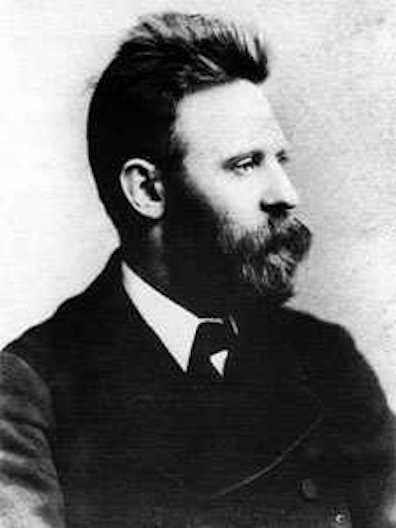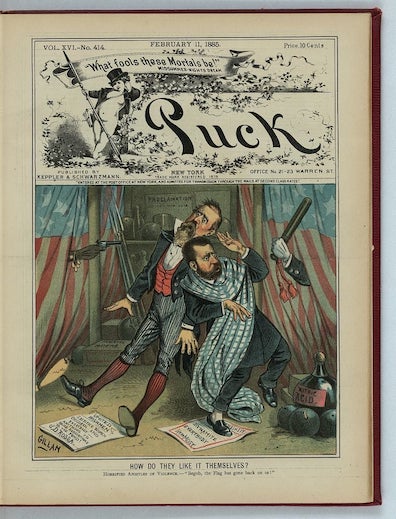Johann Most, whose parody of the Apostles' Creed
Stephen echoes in Scylla and Charybdis, was a
German-American anarchist who published a newspaper called
Freiheit (Freedom), first in London and then in
New York. He gained a reputation in Ireland as a defender of
the Phoenix Park murders.
Most was born illegitimate in Bavaria in 1846, lost his
mother to cholera as a young child, was physically abused by
his stepmother and by authorities at school, had a large part
of his jaw removed to treat an intractable infection, was
expelled from school at age 12 after leading a strike against
one of his teachers, became forcibly apprenticed to a
bookbinder at the same age, and struggled to make an adult
living as a bookbinder and boxmaker. In his early 20s he
discovered Karl
Marx and became a fervent advocate of revolutionary
social democracy. He was imprisoned many times for his
inveterate atheism, for other insults to conventional
morality, and for advocating the use of dynamite to overthrow
the social order. At about age 30 he was exiled from his
native land and eventually settled in London, where he founded
his newspaper and embraced anarchism.
British authorities sentenced Most to a year and a half of
imprisonment for celebrating the assassination of Tsar
Alexander II in Russia in 1881. In the spring of 1882, while
he was still behind bars, his newspaper published an article
approving the murders of Lord Frederick Cavendish and Thomas
Henry Burke in Phoenix Park, and a new round of prosecutions
resulted in two of the paper's compositors being sentenced to
long terms at hard labor. After his release in October 1882,
Most emigrated to America and began publishing the newspaper
in New York City. He was imprisoned three more times in the
US, the last of them in 1902 for celebrating the assassination
of President McKinley.
The American humor magazine Puck ran an issue in 1885
whose cover showed Most and Jeremiah O'Donovan Rossa shocked
by becoming victims of sudden unexpected violence themselves,
with a caption reading "How Do They Like It Themselves?" The
charge of hyprocrisy leveled by this image is somewhat off the
mark, however. Gifford says of Most that "His approach––down
with everything––included even the pamphlet Down with the
Anarchists! (1901), designed to dramatize the impartial
universality of his pacifism."

Johann Most in a photograph ca. 1890. Source:
Wikimedia Commons.

Cover of the 10 March 1888 issue of Freiheit.
Source: Wikimedia Commons.

11 February 1885 cover of Puck magazine,
captioned "How Do They Like It Themselves?," showing Jeremiah
O'Donovan Rossa and Johann Most shocked by violent attacks on
themselves. At Most's feet his newspaper Freiheit proclaims,
"Dynamite Everybody Herr Most." Source: picryl.com.


